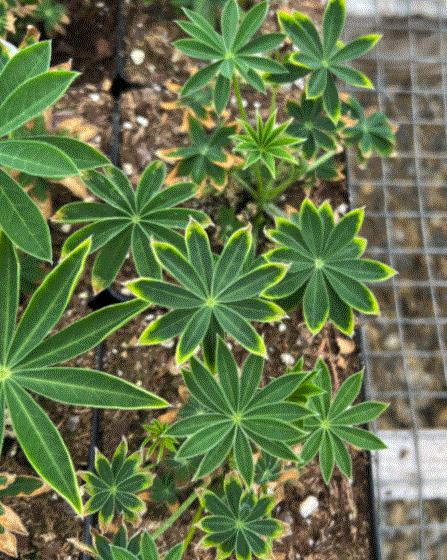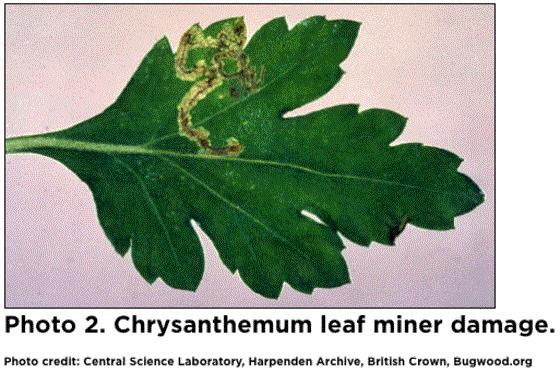It's Like Books on Tape—Only it's GrowerTalks!
If you’re subscribed to the Tech On Demand Podcast (on your favorite podcast app like iTunes, Spotify, Google, Stitcher, Audacy and more) then you might have noticed new episodes popping up over the past week. That’s because I’m trying something new that I think you’ll really like.
With the huge increase of folks listening to audiobooks AND podcasts, I thought it would be cool to create a hybrid of both, using the basically endless content in GrowerTalks magazine as a guinea pig. "Audio Files" is what I’m calling this new series, and there are already five available to stream or download!

I know time is short, and you don't always have a chance to sit down and read each issue of GrowerTalks, especially this time of year. Instead, why not put in your AirPods or sync your device with your car stereo and listen to audio versions of articles from your favorite trade publication?
That’s right—I’m now reading select GrowerTalks articles in short, less-than-10-minute segments I call Audio Files. So far, the articles have covered a wide range of topics, including the latest on the impatiens market, ag/hort land use challenges, H-2A and H-2B intricacies, biocontrols and new greenhouse technology.
My plan is to release a few each week, spanning a wide array of subjects, to save you time, shine a spotlight on important topics and hopefully broaden your perspective on issues and opportunities within the greater horticulture community.
There are numerous ways to find Audio Files, including all the major podcast apps. You can find shortcuts on THE TECH ON DEMAND WEBPAGE. Or search “Tech On Demand” on the app you use.

Nick’s Tip of the Week: More Phyto Phun
Each week, I’ll work with my buddy Nick Flax, a technical services expert at Ball, to share a concern that’s come up during one of his numerous calls with growers across North America. This week, he’s continuing the conversation about phytotoxicity.
PROBLEM: Last week’s tip focused on common phytotoxicity issues that arise from misuse of IPM products, so let’s keep the phyto train rolling. The past couple of weeks has been loaded with bizarre symptoms, and when I’ve drilled down into possible factors with the growers, quite a few occurrences have been due to herbicide injury. Whether damage is due to accidental exposure, or self-inflicted due to improper use, there are a few common indicators and patterns associated with herbicide-related problems.

NICK’S TIP: This week, I’ll cover a few telltale signs that I’ve seen recently, how to best avoid herbicide issues, and what you can do to recover from a damage event.
Herbicide Damage Symptoms
Some crops are more sensitive to herbicides than others, but often symptoms appear to be relatively consistent across multiple different genera in the same area. A few typical symptoms that might appear after herbicide exposure include:
-
Foliar bleaching: This is most often associated with glyphosate injury. When this occurs, spray drift entering the greenhouse is one of the more common causes. Another source of damage is use in and around the greenhouse when crops are present.
-
Leaf curling/cupping: These responses are typically associated with 2, 4-D and dicamba injury. Off-label use in the greenhouse is often the cause for this sort of damage, but drift and volatilized active ingredient entering the greenhouse after perimeter application is another common source.
-
Leaf margin yellowing (followed by necrosis and stunting): Volatilized active ingredients from preemergent herbicides are typically associated with this type of symptom presentation. Damage often appears over a longer period compared with the relatively rapid onset associated with glyphosate, 2,4-D and dicamba. Early symptoms often resemble mineral nutrient deficiency, but they intensify as time goes on, despite crop management adjustments. Often, symptoms worsen, and the rate of damage accelerates as spring temperatures increase and active ingredients volatilize more quickly and readily.
How to Avoid Damage
It’s impossible to control the actions of other applicators nearby, but if you use herbicides in or around your greenhouses:
-
Always read the label and follow directions carefully when you apply. For example, glyphosate labeling often permits use in greenhouses and shadehouses, but label language stipulates that desirable crops must not be present and air circulation fans must be turned off. Failing to heed these warnings will likely result in crop injury.
-
Time preemergent herbicide applications appropriately. This is especially critical if you have dirt/gravel greenhouse floors and use preemergent herbicides to manage weeds under benches. For example, Marengo (a popular product used in greenhouses by many growers) can be used safely on floors when greenhouses are empty, but risk of damage increases if applications are made while crops are present in the greenhouse.
-
Never use products in the greenhouse that are labeled for outdoor use only. It may seem like a good idea when you’re scrambling to get your greenhouses ready for spring, but herbicides that are labeled for outdoor use only are labeled this way for a reason. Issues like this arise especially frequently due to misuse of preemergent herbicides with extended-release kinetics.
How to Recover from Herbicide Damage
In most cases, if plants are exposed to direct, off-target herbicide spray or significant drift, plants will not recover. However, it is possible to get your crops to bounce back from mild exposures to contact herbicides or low-level volatility from misapplied products.
First, control the source of the herbicide that is damaging your crops. If a misapplied preemergent under greenhouse benches is volatilizing active ingredient into your greenhouse air, remove some of the treated soil or gravel if possible. Till activated charcoal into the remaining soil to help absorb residual herbicide or apply a slurry of 1 lb. of activated charcoal/gallon of water per every 150 sq. ft. and increase ventilation to push residual fumes out.
If herbicide has infiltrated your irrigation water source, more extensive management will be necessary. This often necessitates installation of a carbon filtration system that needs to be monitored regularly to maintain its efficacy.
Second, apply a fungicide protectant and remove damaged plant parts, if feasible. Affected foliage or flowers will typically not return to normal and often become targets for opportunistic pathogens jumping onto damaged tissue. The last thing your injured crop needs is an even harder uphill battle to recovery.
Third, help plants metabolize any residual herbicide away and resume normal growth. Optimize the greenhouse environment and shift cultural practices (such as maximizing light levels and keeping plants well-watered and fed) to push new growth. If plants are slow to push through an herbicide exposure, a GA+BA-based plant growth regulator like Fascination or Fresco may encourage more rapid recovery.

Garden Mum Season Kickoff
I’ve been writing this newsletter for a few years now, yet it still surprises me when I see in my weekly report that mum cuttings are about to start shipping even before spring plants are hitting retail here in Cleveland. But, alas, mum season is coming, and it’s never too early to start preparing, even if it’s just gathering resources and arming your production team with what’s needed to produce your best crop ever.
Thankfully, Tech On Demand has you covered with a ton of garden mum resources. I’ll share these (plus, I’m sure Nick will have mum tips a-plenty for you) in the coming weeks and months.

What I will share this week is a very important GARDEN MUM KICKOFF VIDEO we released a couple seasons ago to share resources and production strategies to start your mum season strong.
In this video, I talked with Ball Mums production and sales manager Cindy Drumgool and Dr. Will Healy. They addressed technical topics like preventing specific diseases and pests, proper nutrition strategies, and tips for growing garden mums in cooler temperatures. With more than 50 years of combined experience producing rooted cuttings and finished mums, Will and Cindy bring tremendous knowledge to the table. Be sure to share this video with your entire garden mum team. And watch this newsletter for more tips, tricks and proven strategies!

Scouting Garden Mums
One more thing on mums before we move on: After last week’s newsletter (which was almost completely dedicated to Thrips Parvispinus), I received emails from a few of you mentioning other thrip resources, including one that actually covers all sorts of pests that can attack garden mums.

In SCOUT GARDEN MUMS FOR INSECT PESTS—TO AVOID SURPRISES, Michigan State Extension experts share what to look for in your mum crops that could indicate pest issues. Caterpillars, thrips, mites and leaf miners are covered in detail, with descriptions of exactly what each pest will do to your plants. In addition, the experts offer chemical recommendations to help you and your production team deal with each.
I suggest you print out this article or save the link to share with your team over the next few weeks when everyone's attention turns to garden mums.
Quick Tech Tip: Leaf Spots on Impatiens
This is the time of year when the Tech On Demand experts receive emails and texts with photos of crops showing symptoms that need a really fast diagnosis. For instance, here’s an impatiens pic that the team addressed recently:

The diagnosis and recommendation: The purplish-tan centers and purple border seen on these leaf spots are characteristic of some Cercospora leaf spots, but also could be symptoms related to Alternaria species. The suggestion was to employ a fungicide spray rotation for the next few weeks, while also minimizing leaf wetness and splashing as much as possible.
One approach could be to use Pristine (FRAC 7 + 11), mancozeb + copper (FRAC M03 + M01), and Daconil (FRAC M05). This would be a solid rotation to curb the current outbreak and reduce the potential for spreading to non-symptomatic plants.
Finish Line ...
Hopefully, besides Tech On Demand, you read other Ball Publishing e-newsletters, such as Acres Online from bossman Chris Beytes. This time of year, it’s always fascinating to read his weekend ratings, which is based on real-world reports from readers all across North America. If you don’t get AO, you can SUBSCRIBE HERE and add yourself to the list ASAP.
As Chris reported last week, Easter weekend was above average (in relation to data from the past decade), at a 7.0 out of 10 (Canada had a rough time, at 4.5/10). I pulled one comment out of his write-up because it should serve as an inspiration and positive boost for all of us: When weather is good, shoppers are heading to garden centers in droves and are ready to buy.
Pennsylvania (9). “Easter was great! We had almost nothing left in the way of traditional Easter flowers by late Saturday. Church orders came in very strong; I’d say they are finally back to pre-pandemic levels. Saturday was a nice day and people came out all day to buy flowers and plants. Houseplants, a niche for our business, moved very well at the retail level on Saturday. Many of the retail customers I saw/helped bought only houseplants. Our Easter flower inventory was picked over by Saturday, so that could have contributed to this trend. It was a great start to hopefully a great spring!”—Aimee Rohrbach, Musselman Wholesale Foliage
If that doesn’t get you fired up for horticulture's key season, I don’t know what will!
Have a great weekend (and week) and I’ll talk to you again next Friday.




Please feel free to send your comments, constructive criticism and topic ideas to me at bcalkins@ballhort.com.

Bill Calkins
Editor - Tech On Demand
This email was received by you and 26,299 other fine subscribers!
If you're interested in advertising in Tech On Demand, contact Kim Brown ASAP and she'll hook you up.